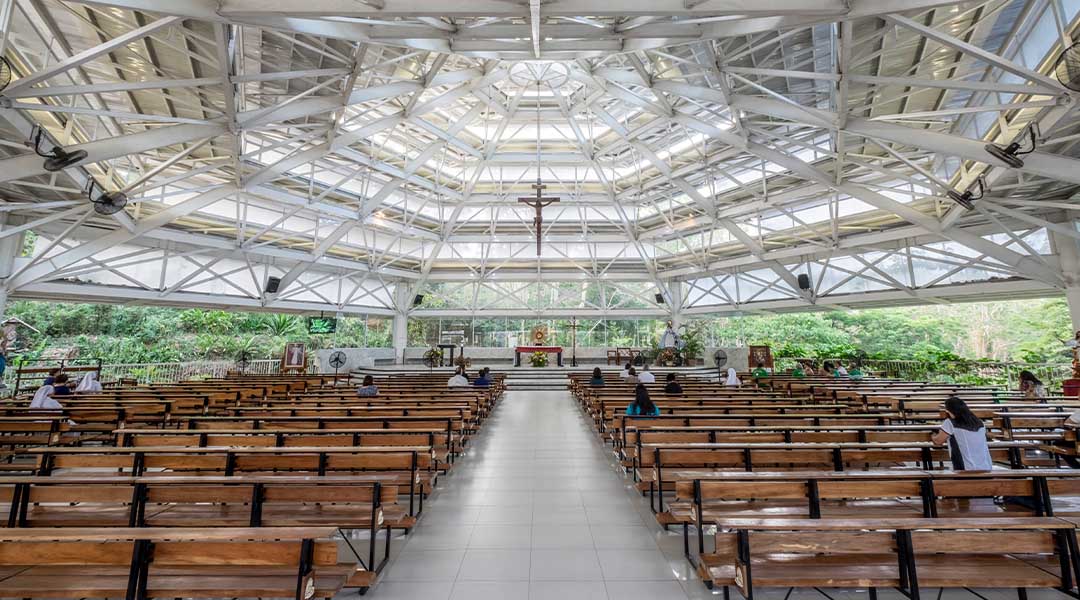
The Church of the Immaculate Heart of Mary is a reverential experience in Antipolo’s hills
The journey to the Church of the Immaculate Heart of Mary in Antipolo befits the city’s nickname as the ‘Pilgrimage Capital of the Philippines’. Nestled in the hilly terrain of Rizal Province, you arrive on-site via a road straddling Sucaben River to see a spindly cross rise above a pyramidal edifice. Completed in 2013 by Dominic Galicia Architects—well known for their religious architecture in the predominantly Catholic Philippines—the building unifies the firm’s beliefs about designing places of worship with their approach to tropical design.
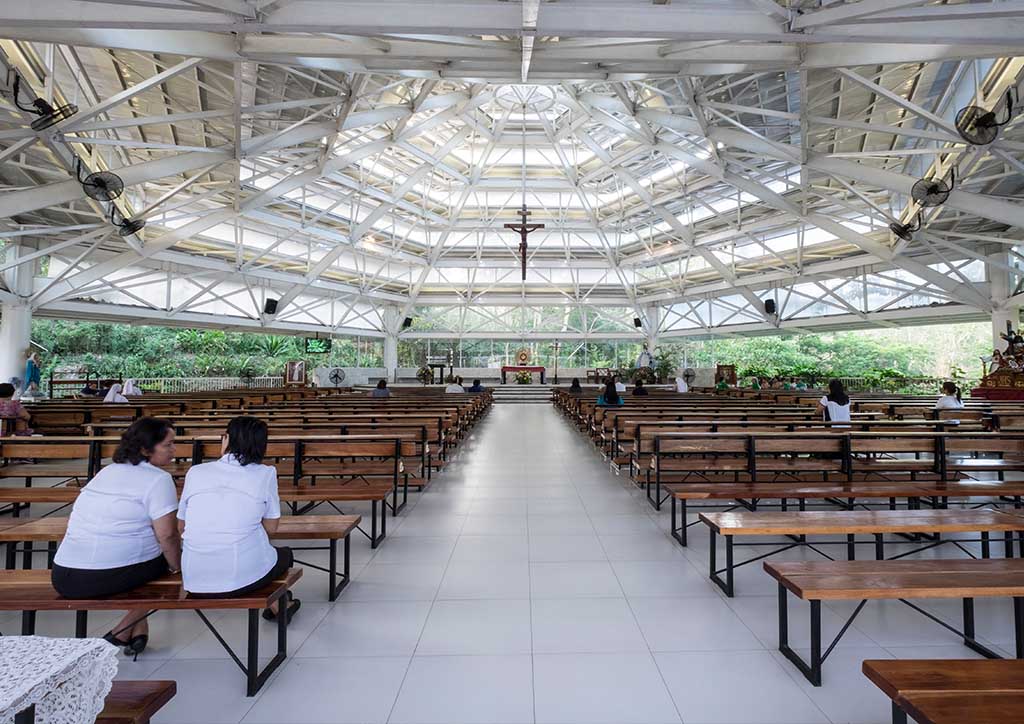
On our visit shortly after dawn, early morning joggers and the occasional tricycle zipping along the sloped road were the only signs that Antipolo was just beginning to wake up. However, the peaceful start to the day belied the activities that the church routinely anticipates week in, week out. Local churchgoers trickled through the entirely open entrance canopy to await the first mass of the day, while decorations were already in place for what the church has become increasingly known for: weddings.
The natural scenery, framed by a utilitarian-looking steel structure, has found favor with couples coming from way beyond the hills of Antipolo. During peak season—November to January—the church handles somewhere between 60 to 70 weddings per month, with up to four weddings a day. “We did not expect the church to be this popular, it can be exhausting,” remarks John Capistrano, the parish’s secretary since 2007. It has proved to be so popular that even the local gaze, Antipolo Star, broadcasts a live mass on Facebook every Sunday morning.
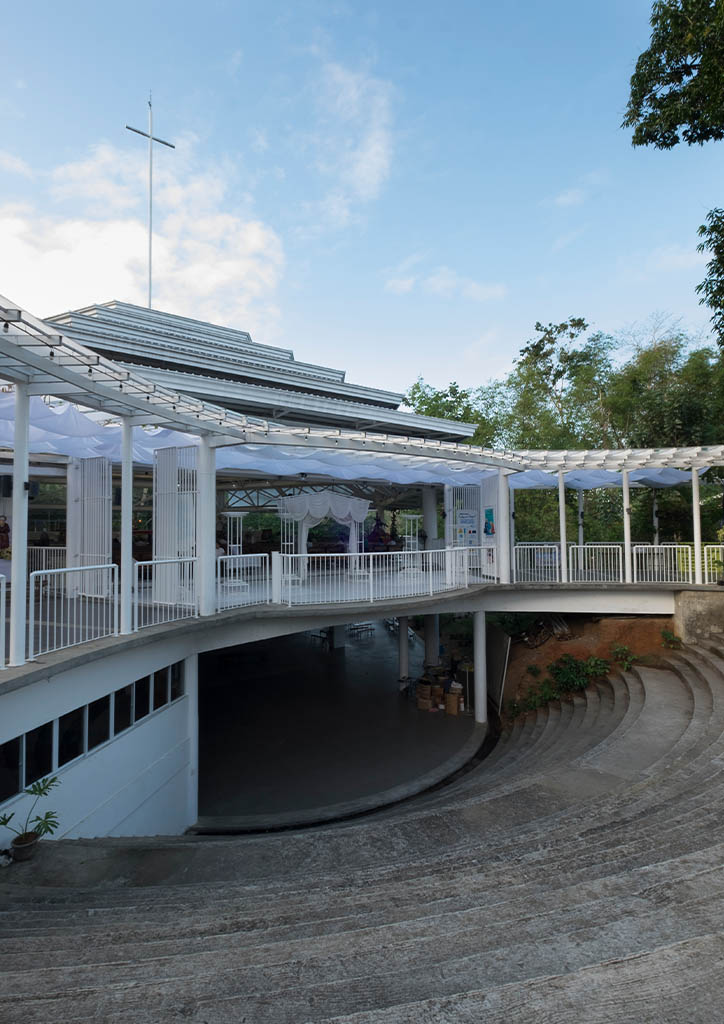
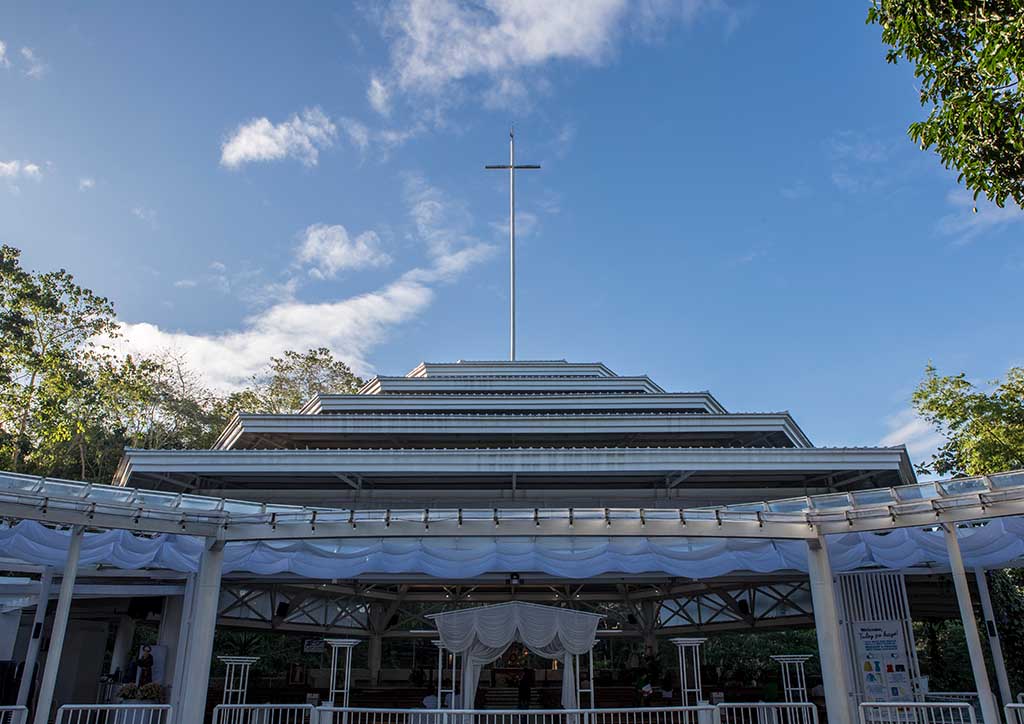
Only by moving through the space can one attempt to comprehend the architect’s vision to crystallize the story of the Immaculate Heart of Mary. Researching about the name led to the events at Fátima, Portugal on 13 October 1917—where the supposed apparition of the Virgin Mary took place to perform miracles to the tens of thousands who had gathered based on a prophecy by three shepherd children—it was the phenomena of the ‘dancing’ sun that became the essence of the church’s design.
READ MORE: Miagao Church’s naked coralline limestone, a mistake for authenticity
It was reported that the extraordinary solar activity produced a spectrum of colored light, which in turn strengthened the faith of those in attendance. In a similar manner, Dominic Galicia, principal of Dominic Galicia Architects, sought to “somehow express this miraculous shift” in an architectural way by shifting the skylight further up the aisle from the center.
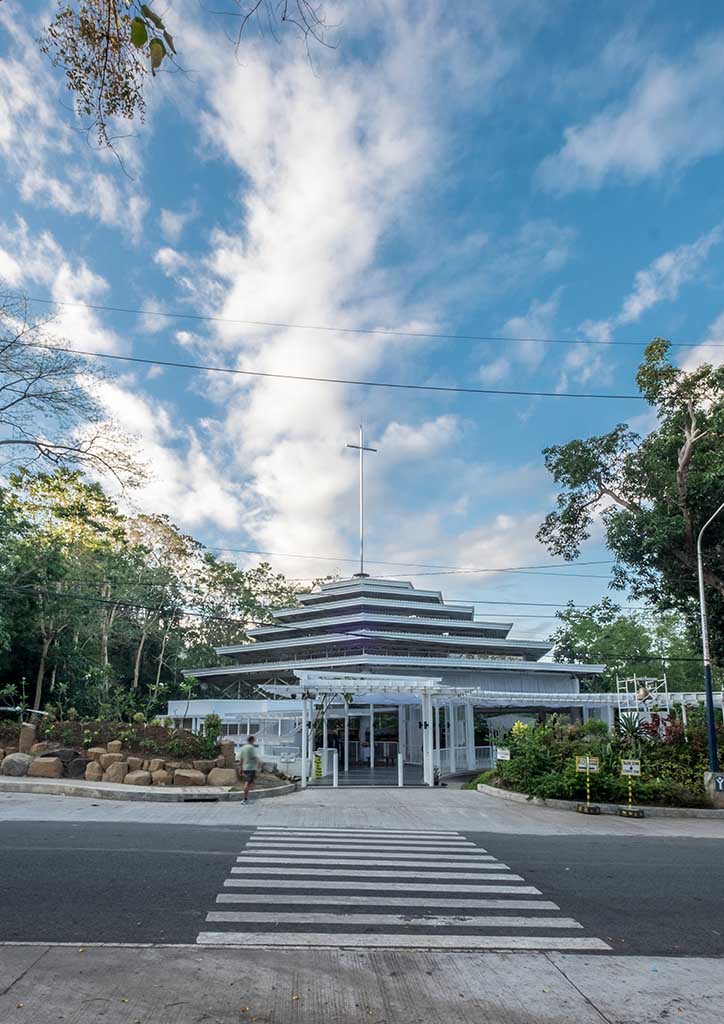
It is a visually arresting experience with every step down the aisle you take, as the geometric structure appears to transform in shape. “It’s the shift that draws our attention and heightens the experience,” furthers Galicia. The closer you get to the circular opening, the more you see the base of the cross at the apex of the dome. No matter where you sit or stand one always has a direct line of sight to the church’s lush environs, and every corner receives daylight due to the stepped hexagonal arrangement of clerestory windows all the way up to the top. Leaves rustle and sway in the wind beyond the edge of the structure providing an added contemplative quality to the rigid architectural setting. Breezes circulate and birdsong echoes across the enclosed space. Tons of steel appear to float almost impossibly. Architecture, nature, and God are immeasurably present.
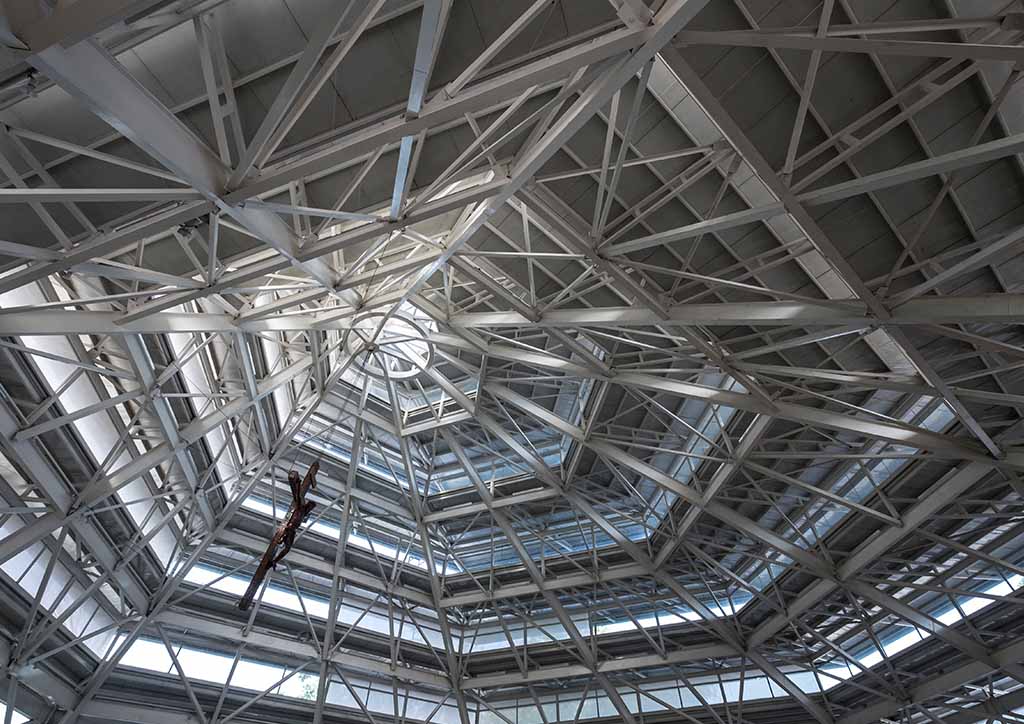
Although the Church of the Immaculate Heart of Mary is physically consummate at first glance, its prolonged genesis dates back to the early 90s. Due to a regular change in parish priest during the early stages of the project, the already-laid foundations for a more traditional, rectilinear stone church was all that remained. A community for the church was also non-existent so the parish had to build one at the same time as securing phased funding for the construction. After a succession of setbacks to get the project o the ground, Galicia was brought in to work on the church by the structural engineer, Carlos M. Villaraza, who was also a parishioner here. Having worked together on the St. Alphonsus Mary de Liguori Parish Church, Magallanes Village, Makati, Galicia’s collaboration with Villaraza—one of the foremost and internationally-known seismic engineers in the country—ensured that the church was earthquake resistant. “The multiplicity of bracing is what gives the roof its seismic stability, which is then anchored by six giant columns,” Galicia explains.
YOU MIGHT LIKE: Intramuros’ iconic San Agustin Church gets Kärcher cleanup treatment
Galicia shared with us many design details that have, thus far, not made the light of day or were replaced by a more expedient solution. The sacristy, for example, was meant to be circular in form and whose accommodation was to be screened with thin slats echoing the verticality of the church’s main cross. The core structure would have also supported the carillon bell tower, and its massing would have formed a harmony with the hexagonal geometry of the main building. As it stands today, the sacristy appears to hold more of a pragmatic relationship with the church than a continuation of Galicia’s design narrative.
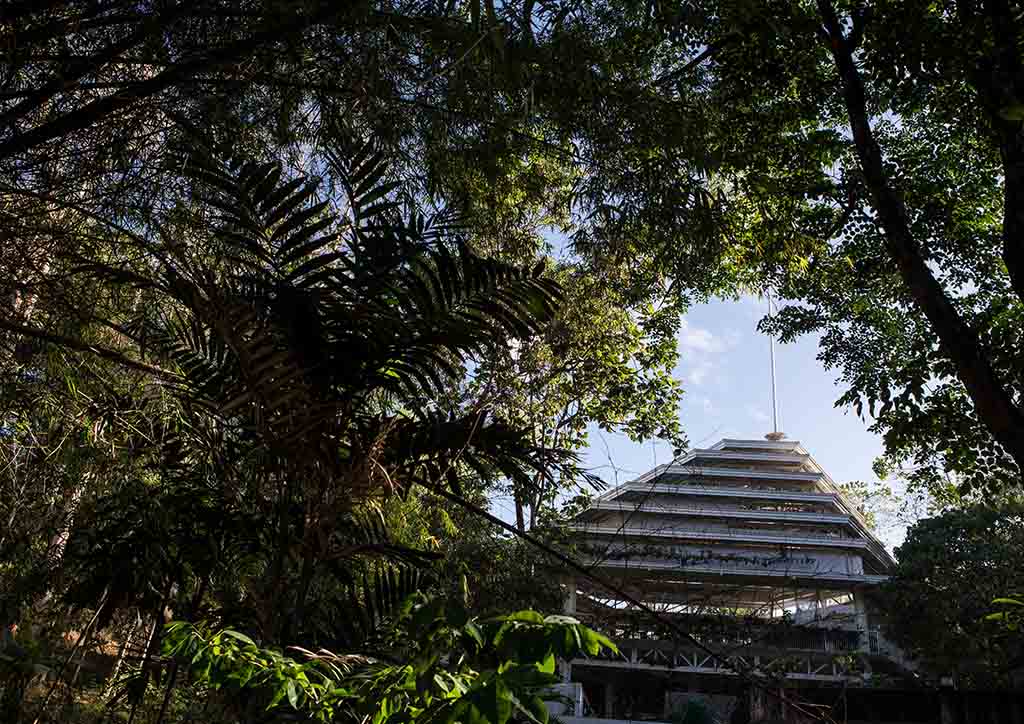
With the entire church level being panoramically open to the elements, Galicia also revealed the unimplemented designs for the entrance doors, which would have been positioned centrally in line with the altar. A pair of large, mirrored tipolo leaf-shaped (Antipolo was named after the tipolo trees in the area) steel-and-wood gates would have formed a ceremonious entry point for special religious occasions. As built, the church’s majesty lies wholly in the spectacle of the roof.
This Church of the Immaculate Heart of Mary has become much more than a local religious institution; like many other historic places of worship that are frequented by pious and casual visitors alike, Galicia’s refreshing design has made it into a destination in itself. The secretary is keen to point out that the building really isn’t just about serving its parishioners, but the ever-increasing number of visitors who come here for quiet pleasure and a selfie to boot. As we quietly made our exit and returned to the bustle of the city, the church staff was already underway with preparations for the next showpiece wedding.
This article first appeared in Tropical Architecture for the 21st Century Volume 2. Edits were made for BluPrint online.
READ MORE: St. Catherine’s Church in Carcar, Cebu—a noble church on the hill


